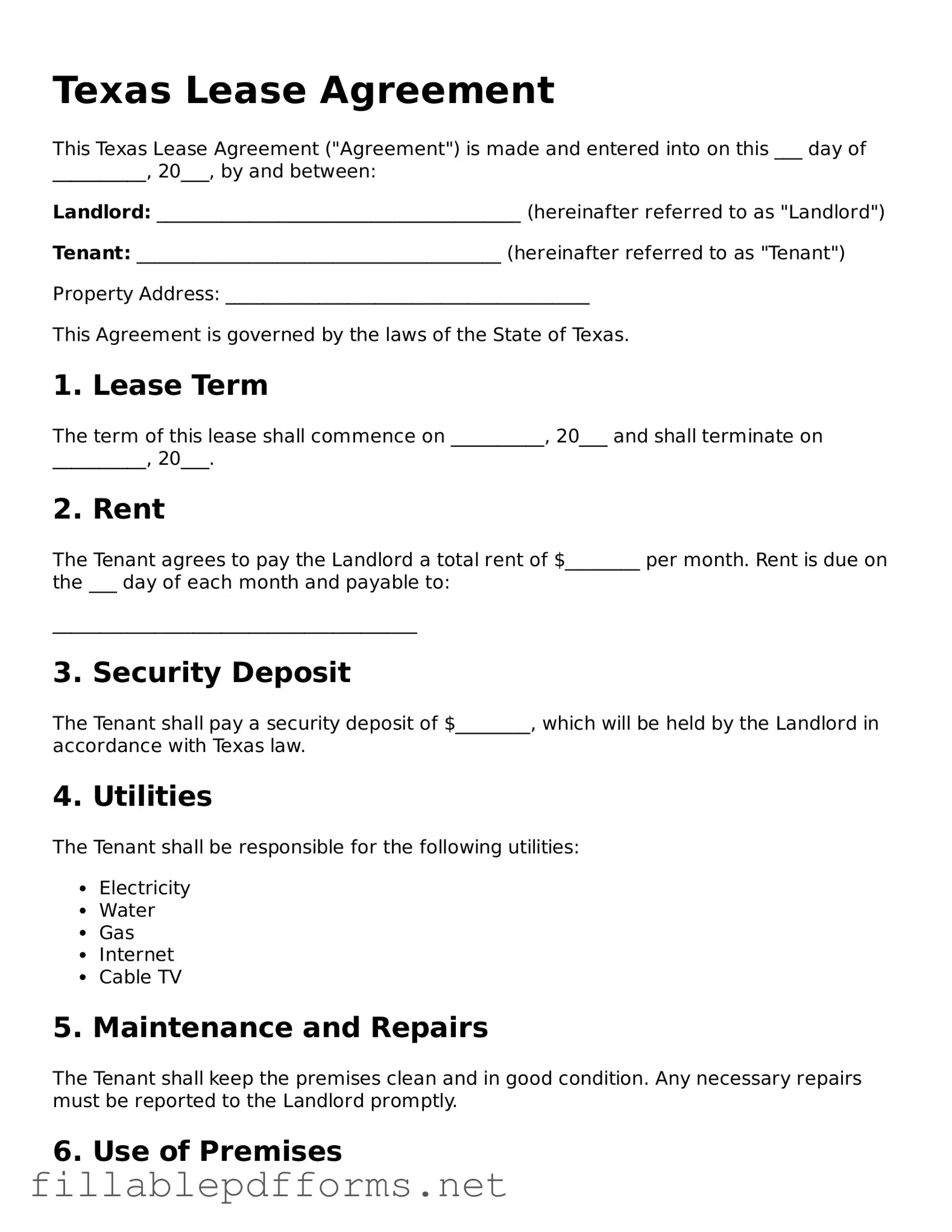Attorney-Verified Lease Agreement Form for Texas State
A Texas Lease Agreement form is a legal document that outlines the terms and conditions between a landlord and tenant for renting residential or commercial property in Texas. This form serves as a binding contract, ensuring both parties understand their rights and responsibilities. Understanding this agreement is essential for a smooth rental experience and can prevent disputes down the line.
Launch Editor Here
